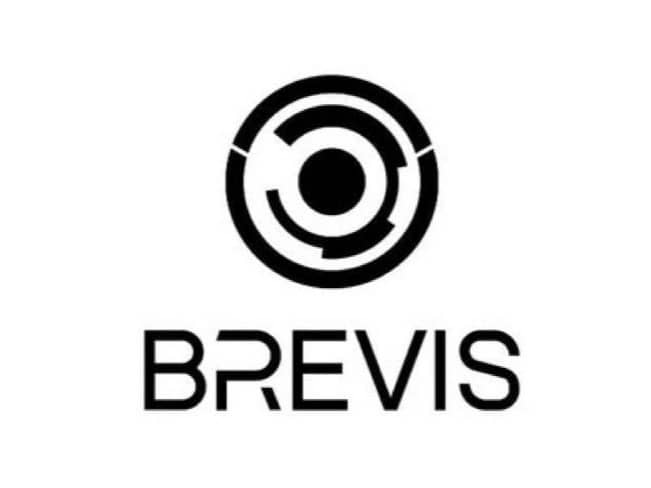订阅 wiki
Share wiki
Bookmark
Brevis Network
Brevis Network
Brevis Network 是一个可验证的计算平台,充当 区块链 应用程序的计算层。它旨在使复杂的计算能够在链下处理,并使用零知识 (ZK) 证明在链上以加密方式验证结果,从而解决链上计算的局限性和高成本问题。[1] [2]
概述
Brevis Network 将自身定位为“无限计算层”,旨在增强 去中心化应用程序 (dApp) 的功能。它解决的核心问题是在 区块链 上直接执行复杂的计算任务的固有困难和高昂成本。这种链上计算可能既缓慢又昂贵,从而限制了 dApp 的复杂性,尤其是在 去中心化金融 (DeFi) 和人工智能 (AI) 等领域。该项目的解决方案是一种 混合 模型,其中密集型计算工作负载被转移到链下的 Brevis 网络。处理完成后,Brevis 会生成一个简洁的 ZK 证明,这是一小段加密数据,可以证明计算的正确性,而无需泄露底层数据本身。然后,此证明被发送回链上的 智能合约 以进行高效验证。[1]
这种机制允许 dApp 利用复杂的数据处理和分析,否则这些处理和分析在链上执行是不切实际的。该项目声称,这种方法可以将验证计算的成本降低到链上等效成本的一小部分,并指出潜在的成本降低高达 1/1,000,000。Brevis 旨在打破它所认为的 DeFi 的一个主要瓶颈:昂贵的链上重新计算。长期愿景超越了 区块链 应用程序,目标是使任何软件或计算都可验证。该项目的标语“ZK Power, Real Adoption”反映了其专注于使 ZK 技术更容易被开发人员访问,并支持更强大、可验证的应用程序。[1] [2]
历史
Brevis Network 的公开出现可以追溯到 2023 年 3 月,即其官方 X(前身为 Twitter)帐户创建的月份。
2025 年 9 月 23 日,Brevis 宣布与 KaitoAI 合作推出“Brevis Yapper Leaderboard”,这是一项被描述为新兴信息金融 (InfoFi) 领域创新的举措。[2]
当月晚些时候,从 2025 年 9 月 29 日至 30 日,Brevis 与著名的基础设施项目 AltLayer 和 EigenLayer 共同在新加坡举办了一场名为“(Re)fundamentals)”的会议。该活动以关于可验证计算及其对 DeFi 的影响的演讲为特色。会议结束后,Brevis 被宣布为定于 2025 年 10 月 1 日举行的“第三届新加坡 ShanHaiWoo 闭幕式”的合作伙伴和赞助商,该活动以 以太坊 联合创始人 Vitalik Buterin 为特色。
技术
核心机制
Brevis Network 的架构建立在利用零知识密码学的链上和链下混合计算模型之上。该过程涉及三个主要步骤:
- 链下处理: 由链上应用程序请求的复杂且计算量大的任务被发送到 Brevis 网络以供执行。这种链下环境不受 区块链 的 gas 费用或 区块 处理时间的限制。
- ZK 证明生成: 计算完成后,Brevis 会生成一个 ZK 证明,该证明以加密方式证明结果的正确性。此证明验证计算是否按照指定的逻辑执行,而无需链上验证者重新执行整个任务。
- 链上验证: 紧凑的 ZK 证明被提交到 区块链 上的智能合约。然后,合约可以以比执行原始计算低得多的计算成本验证证明的有效性,从而确认链下结果。
此模型旨在扩展 区块链 的计算能力,从而使开发人员能够构建更智能和数据密集的应用程序。[1]
产品
Brevis 提供一套旨在促进 ZK 驱动的应用程序的开发和部署的产品。
- zkCoprocessor: 这是网络的核心引擎,负责执行链下计算并生成相应的 ZK 证明以进行链上验证。它充当 dApp 外包其计算需求的主要接口。[1]
- Pico zkVM: 一个零知识虚拟机 (zkVM),允许在 Brevis ZK 证明环境中执行通用计算。Pico 的一个关键目标是降低开发人员的入门门槛。根据该项目转发的一份声明,“Pico 使在 zk 方面没有经验的开发人员能够构建 zk 应用程序。”[1] [2]
- Incentra: 在网络的官方网站上列为产品,但可用文档中未提供有关其功能的具体详细信息。它与“Brevis Continuous Incentivization”计划相关联,该计划旨在通过向用户分配奖励来促进 DeFi 活动。2025 年 9 月的一份演示文稿中的数据显示,该计划已吸引了超过 23,000 名独立用户,并且每年分配超过 1 亿的激励措施。[1] [2]
- Explorer: 网络提供的一种工具,据推测是一种 区块 或交易浏览器,允许用户导航和查看 Brevis 生态系统中发生的活动。[1]
团队
Noam Nelke 已被确认为 Brevis Network 的联合创始人。他于 2025 年 9 月在新加坡举行的“(Re)fundamentals)”会议上发表了关于可验证计算的主题演讲。[2]
合作伙伴关系
Brevis Network 已与 Web3 生态系统中的各种项目建立了合作关系,包括 DeFi 协议、基础设施提供商和活动组织者。
DeFi 和 dApp
该网络将许多 DeFi 协议和 dApp 列为其技术的合作伙伴或用户。这些包括:
- PancakeSwap
- Uniswap
- QuickSwap
- Kwenta
- Beefy
- Gamma
- Kim Protocol
- Mendi Finance
- Algebra
- Frax
- Berachain
- Hemera
- Trusta
- Usual
- OpenEden
- Turtle
活动和战略合作
Brevis 还参与了活动和特定产品发布的战略合作伙伴关系。主要合作者包括:
- AltLayer: 与 Brevis 共同举办了“(Re)fundamentals)”会议。
- EigenLayer: 与 Brevis 共同举办了“(Re)fundamentals)”会议。
- KaitoAI: 合作推出了“Brevis Yapper Leaderboard”。
- ShanHaiWoo: Brevis 是“ShanHaiWoo × Ethereum Singapore”演示日和闭幕式的合作伙伴。
- 其他活动合作伙伴: HashKey、Tencent Cloud、DRK Lab 和 Blockchain Builders。
发现错误了吗?
